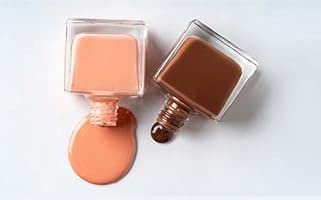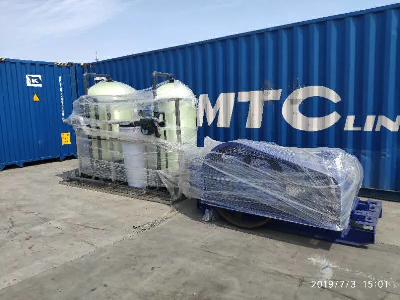10000lph RO Seawater desalination Systems for boiler and
drinkingWhat is Reversed Osmosis? Reverse osmosis (RO)
technology is a high-tech water treatment technology, it relies on
the reverse osmosis membrane under pressure to make the
solvent and solute in the solution of the characteristics of the
work. "Penetration" is a physical phenomenon, reverse osmosis
is the containing salt, and various small impurities in water (raw
water) greater than natural osmotic pressure, the water from
the high concentration of reverse osmosis from one side to the
low concentration, and the vast majority of minor impurities
in raw water, organic matter, heavy metals, bacteria, viruses
and other harmful substances, such as the sewage outlet
discharge.At present, RO process has occupied markets rapidly by
the advantages of easy operation, easy maintenance
and equipment modular, and begin to be the most widespread
ways of instead of distillation step by step.XST reverse osmosis
water treatment system uses pre-treatment device, including quartz
sand filter, activated carbon filter, water softener(anti-scale
doing system), security filter and RO reverse osmosis system, with
the multiple filtration and separation of water ion technology, the
salt and bacteria removal rate can reach 97%-99%, thus providing
safe and pure
waterWhat types of water sources does it treat?Reverse Osmosis is an ideal water treatment solution in most types of water.tap water, also known as municipal sources, undergroundwater, which includes brackish water, and saltwater. The biggest distinction between these three types is the Total Dissolved Solids (TDS) content of each type. As a rule of thumb, the American Health Association requires that drinking water is under 2,000 PPM TDS.Reverse osmosis is often used in a tap water environment to reduce hardness, or the debris deposited in water from traveling in metal pipes. Total dissolved solids is often a target of water purification in tap water systems.Underground reservoirs of water are often brackish, meaning they contain large volumes of salt, but not enough to be considered salt water. Groundwater is most often purified for the agriculture industry, the mining industry. Groundwater is also a prized target of the bottling industry, because the unique mineral combinations often have an appealing taste.Salt water reverse osmosis (sometimes referred to as desalination) is the turning of saltwater into drinking water. Ocean water has up to 45,000 PPM TDS. The biggest uses of desalination come in providing water in areas that lack a regular supply of fresh water. Is pretreatment necessary?It is very important that feed water be preconditioned to protect the membranes from fouling causing premature failure.The membrane is constructed of a porous material that allows water to pass through, but rejects up to 99% of the dissolved solids at the surface. The dissolved salts are concentrated reject water (brine stream), where they are discharged to waste. Removing things prior is key to letting the RO system do what it was meant to do.As the RO System continues to operate, the dissolved and suspended solids in the feed water tend to accumulate along the membrane surface. If these solids are allowed to build up, they eventually restrict the passage of water through the membranes, resulting in a loss of throughput. (The throughput capacity of the membranes is commonly referred to as the flux rate, and is measured in gallons per square foot of membranes surface area per day.)Is it necessary to get a water analysis?A detailed chemical analysis (LSI, SDI, or CFI) of the RO feed water is an absolute necessity for identifying potential foulants. This should include a measurement of the hardness (calcium and magnesium), barium, strontium, alkalinity, pH, and chlorine. The data from the chemical analysis can be used by the engineers designing the system to determine the optimum membrane array that will both minimize the tendency of scale and deposit formation and maximize the recovery and flux rate.What determines the precise pretreatments for a particular RO?In one word: analysis. Every source of water is different, and you never know what's in your water until you have it analyzed. The water analysis, LSI, SDI, or CFI values are used to determine the precise pretreatment requirements for a particular RO System. Since water supplies vary considerably from one location to another, each pretreatment requirement will be different.Does the feed water need to be softened by the RO?Ion exchange is a popular method for softening and reducing the potential for mineral scale formation on the membrane surface. Ion exchange softening uses sodium to replace scaleforming ions such as calcium, magnesium, barium, strontium, iron, and aluminum to prevent damage to the membrane elements. The sodium forms very soluble salts, which are readily rejected by the Reverse Osmosis System and do not readily form mineral scales on the membrane surface.
Related products about 10000lph RO Seawater Desalination Systems for Boiler and Drinking
-
 Waste Tyre Plastic Recycling Machinery Machine Tire Crusher Production Line Rubber Crumb Grinding Machine Equipment Tire Shredder
Waste Tyre Plastic Recycling Machinery Machine Tire Crusher Production Line Rubber Crumb Grinding Machine Equipment Tire Shredder
-
 Stretch Plastic Blowing Pet Bottle Making Blow Molding Machine Bottles Stretch Automatic Pet Bottle Blowing Machine
Stretch Plastic Blowing Pet Bottle Making Blow Molding Machine Bottles Stretch Automatic Pet Bottle Blowing Machine
-
 Waste Plastic Pet Bottle, Water Bottle Flake, PP/HDPE/LDPE PE Film Jumbo Woven Bags Plastic Crusher Machine, Plastic Crushing Washing Recycling Machine
Waste Plastic Pet Bottle, Water Bottle Flake, PP/HDPE/LDPE PE Film Jumbo Woven Bags Plastic Crusher Machine, Plastic Crushing Washing Recycling Machine
-
 Type 2 Wall-Mounted Electric Car Charging Station 7kw /11 Kwelectric Vehicle Charging Station Home Wallbox AC EV Charger Single Phase or 3three Phase
Type 2 Wall-Mounted Electric Car Charging Station 7kw /11 Kwelectric Vehicle Charging Station Home Wallbox AC EV Charger Single Phase or 3three Phase
-
 G-View G12W Wholesale Auto Car LED Headlight Bulb High Power H13 H11 9005 H7 H4 Car LED Headlights LED Car Lights
G-View G12W Wholesale Auto Car LED Headlight Bulb High Power H13 H11 9005 H7 H4 Car LED Headlights LED Car Lights
-
 New Design Porcelain Round Plates Dinner Set for Wedding and Banquet
New Design Porcelain Round Plates Dinner Set for Wedding and Banquet
-
 China 2023 New Design Super Soft 100% Polyester Microfiber Knitted Oversized Decoration Hoodie Blanket
China 2023 New Design Super Soft 100% Polyester Microfiber Knitted Oversized Decoration Hoodie Blanket
-
 Handmade Art Creative Materials Thickened White Paper Cup DIY Disposable Handmade Colored Paper Cup
Handmade Art Creative Materials Thickened White Paper Cup DIY Disposable Handmade Colored Paper Cup






